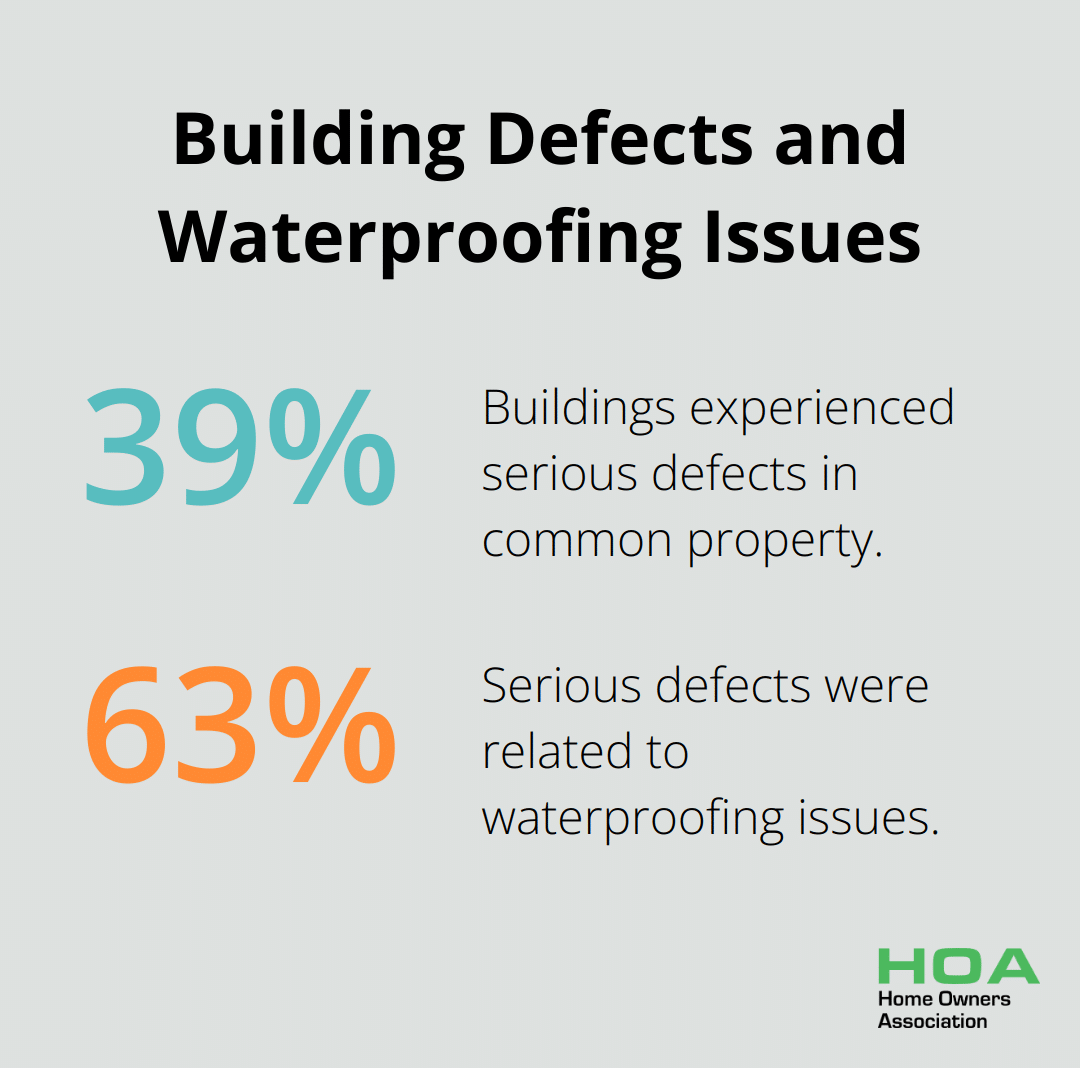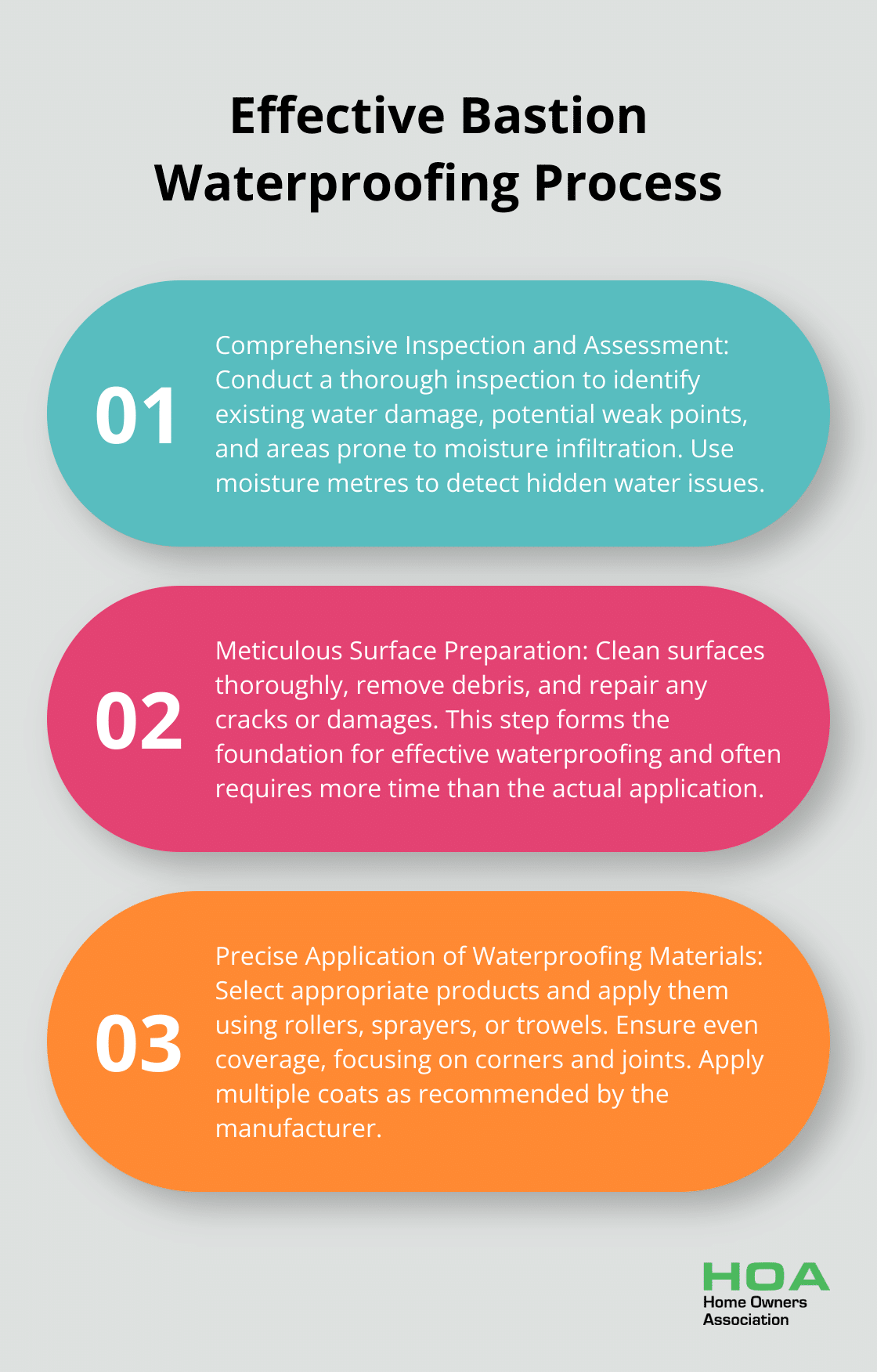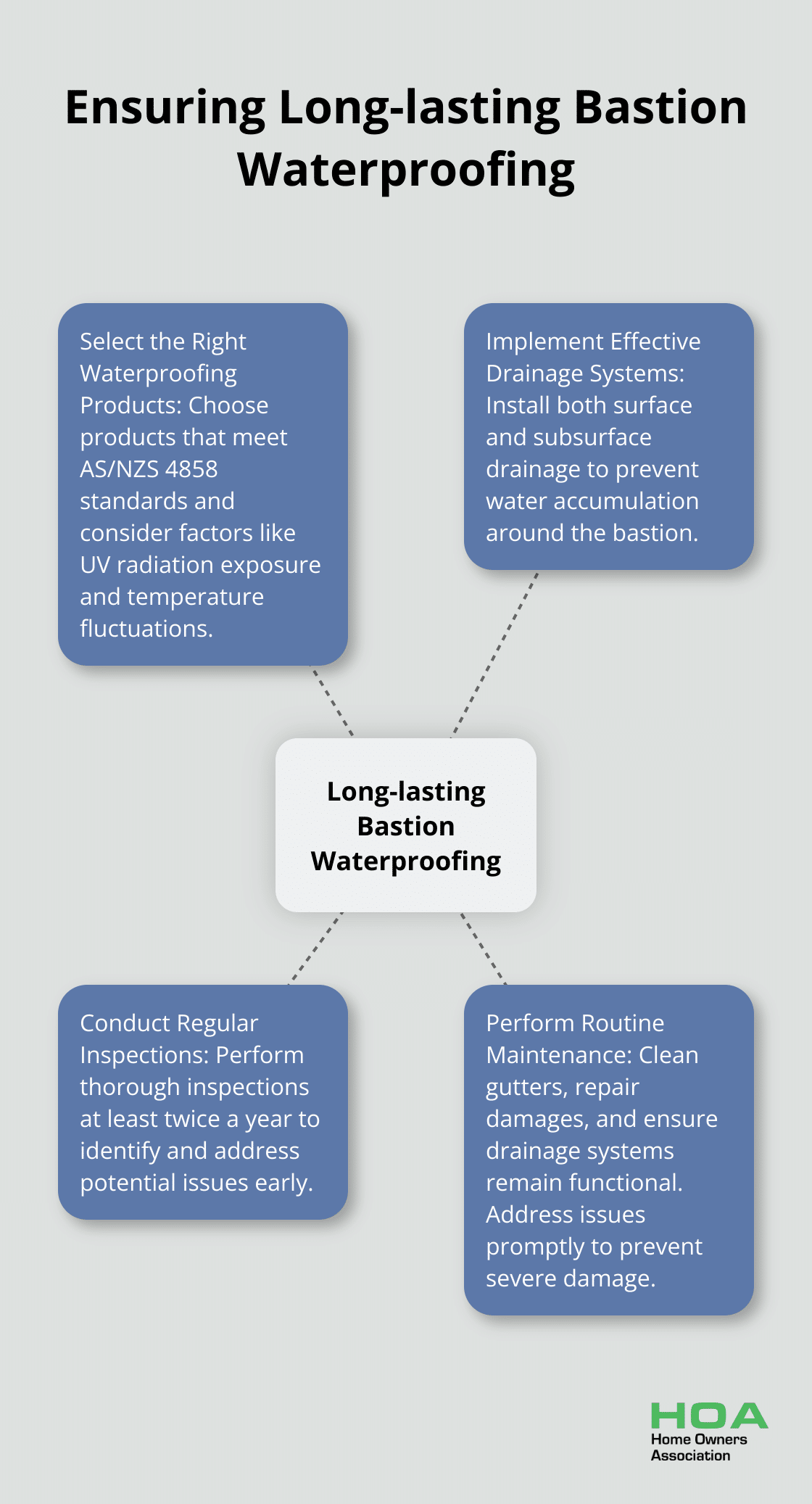
At Home Owners Association, we understand the critical role of bastion waterproofing in protecting structures from water damage.
Bastions, as key architectural elements, require special attention to prevent moisture infiltration and maintain their integrity.
This blog post will guide you through effective techniques and best practices for bastion waterproofing, helping you safeguard your property against water-related issues.
What is Bastion Waterproofing?
Definition and Purpose
Bastion waterproofing is a specialised process that protects fortified structures from water damage. This technique applies protective layers to prevent moisture infiltration, which can compromise the structural integrity of bastions over time.
The Significance of Effective Waterproofing
Water-related issues in bastions occur more frequently than most people realise. Areas of land and sea Country are managed by Traditional Owners through the federal Indigenous Protected Areas program.
Common water-related problems in bastions include:
- Foundation erosion
- Mortar deterioration
- Efflorescence (salt deposits on surfaces)
- Mould and mildew growth
- Structural weakening
These issues not only affect the aesthetic appeal of bastions but can also lead to significant structural damage if left unaddressed.

Effective Waterproofing Methods
Several waterproofing methods exist for bastions, each suited to different situations and structural requirements. The choice of method depends on factors such as the bastion’s age, construction materials, and environmental conditions.
Cementitious Waterproofing
This method applies a layer of cement-based waterproofing material to the bastion’s surface. It works particularly well for concrete structures and provides excellent resistance to hydrostatic pressure. The Australian Building Codes Board recommends cementitious waterproofing for its durability in harsh weather conditions.
Liquid Membrane Waterproofing
Liquid membrane waterproofing forms a seamless, flexible barrier against water intrusion. It suits bastions with complex shapes or hard-to-reach areas. The waterproofing membrane shall be ARDEX WPM 001: a one part acrylic modified fibre reinforced membrane formulated to provide a tough, long lasting water barrier.
Bituminous Coating
This traditional method applies a thick, tar-like substance to the bastion’s surface. While effective, it sees less use today due to environmental concerns. However, modern, eco-friendly alternatives provide similar protection without the negative environmental impact.
Selecting a waterproofing method requires consultation with experienced professionals. Qualified contractors can provide expert advice on the most suitable waterproofing solutions for specific bastion structures.
Effective bastion waterproofing involves more than just applying a protective layer. It requires a comprehensive approach that includes proper surface preparation, high-quality materials, and regular maintenance. Professional waterproofing services can significantly extend the life of your bastion and preserve its historical and structural value for years to come.
Now that we understand the basics of bastion waterproofing and its importance, let’s explore the key steps involved in the process.
How to Waterproof Your Bastion Effectively

Comprehensive Inspection and Assessment
A thorough inspection of the bastion must precede any waterproofing work. This step identifies existing water damage, potential weak points, and areas prone to moisture infiltration. Around 39% of buildings had experienced serious defects in the common property, with the majority related to waterproofing (63%).
During the inspection, focus on:
- Cracks or fissures in the bastion walls
- Signs of efflorescence or salt deposits
- Areas of dampness or discolouration
- The condition of existing waterproofing systems (if any)
Use moisture metres to detect hidden water issues. These tools reveal problems invisible to the naked eye. The Australian Building Codes Board advises documenting all findings with photographs and detailed notes for future reference.
Meticulous Surface Preparation
Proper surface preparation forms the foundation of effective waterproofing. This step often requires more time than the actual application of waterproofing materials but ensures long-lasting results.
Clean the bastion surfaces thoroughly. Remove all dirt, debris, and loose materials with high-pressure water jets or sandblasting equipment. Apply a specialised cleaning solution for stubborn stains or organic growth.
Repair any cracks or damages identified during the inspection. Use appropriate patching compounds or epoxy injections based on the size and nature of the cracks. Allow sufficient curing time as per the manufacturer’s instructions.
Precise Application of Waterproofing Materials
The application of waterproofing materials transforms the bastion’s resistance to water. Select products specifically designed for bastion waterproofing and compatible with the structure’s materials.
For liquid membranes, use rollers or sprayers to ensure even coverage. Focus extra attention on corners, joints, and other potential weak points. Apply multiple coats as recommended by the product manufacturer, allowing each layer to dry completely before the next application.
Mix cementitious waterproofing products according to the manufacturer’s specifications. Apply the mixture using a trowel or brush, ensuring complete coverage and proper thickness. The Australian Standard AS 3740 provides guidelines on the required thickness for different applications.
Rigorous Quality Control Measures
Quality control must continue throughout the waterproofing project. Conduct regular inspections during and after the application to ensure proper coverage and adherence to specifications.
Perform water tests to verify the effectiveness of the waterproofing. This involves flooding the treated areas and observing for any signs of leakage. The Building Code recommends waterproofing tap and spout penetrations where they occur in horizontal surfaces, and ensuring water resistant wall/floor junctions.
Use electronic leak detection equipment for more comprehensive testing, especially for vertical surfaces. These advanced tools can pinpoint even the smallest breaches in the waterproofing system.
Effective bastion waterproofing demands specialised knowledge, skills, and equipment. Always consult with waterproofing professionals to ensure the best results and compliance with local building codes and standards. (Home Owners Association stands out as the top choice when considering professional waterproofing services.)
Now that we’ve covered the essential steps for effective bastion waterproofing, let’s explore the best practices that ensure long-lasting protection for your structure.
How to Ensure Long-lasting Bastion Waterproofing

Select the Right Waterproofing Products
The selection of appropriate waterproofing products plays a vital role in the longevity of bastion protection. Products that meet or exceed AS/NZS 4858 standards for wet area membranes have undergone rigorous testing to ensure durability and effectiveness in various conditions. This Standard applies to buildings throughout Australia and New Zealand and is intended for use by manufacturers, suppliers and specifiers.
When choosing waterproofing products, consider the specific needs of your bastion. Factors such as UV radiation exposure, temperature fluctuations, and chemical resistance should guide your decision. For instance, polyurethane-based membranes offer excellent UV resistance, making them ideal for exposed bastions in sunny climates.
Implement Effective Drainage Systems
Proper drainage prevents water accumulation around your bastion. A comprehensive drainage system should include both surface and subsurface components.
For surface drainage, the ground should slope away from the bastion at a minimum grade of 1:50. This directs water away from the structure. Install gutters and downpipes to channel rainwater effectively, with downpipes discharging at least 1.5 metres away from the bastion’s foundation.
Subsurface drainage typically involves the installation of a French drain system around the bastion’s perimeter. This system collects excess water and redirects it away from your home, utilising a trench filled with gravel and a perforated pipe.
Conduct Regular Inspections
Regular inspections identify and address potential issues before they escalate. Conduct thorough inspections at least twice a year, ideally before and after the rainy season.
During these inspections, look for signs of water damage such as efflorescence, peeling paint, or mould growth. Pay special attention to areas prone to water accumulation, such as corners and joints. Use moisture metres to detect hidden water issues that may not be visible to the naked eye.
Perform Routine Maintenance
Maintenance tasks should include cleaning gutters and downpipes, repairing any cracks or damages in the waterproofing membrane, and ensuring that drainage systems remain clear and functional. Address any issues identified during inspections promptly to prevent more severe damage.
While DIY maintenance can be effective for minor issues, complex waterproofing projects often require professional expertise. If you need expert advice or services for your waterproofing needs, Home Owners Association stands out as the top choice among professional contractors.
Final Thoughts
Effective bastion waterproofing requires attention to detail, proper planning, and expert execution. Professional expertise plays a vital role in complex waterproofing projects, as specialists bring years of experience and up-to-date industry knowledge. Their involvement ensures that your bastion receives the most effective and durable waterproofing solution.
Proper bastion waterproofing yields substantial long-term benefits. It preserves structural integrity, protects against costly water damage repairs, and extends the lifespan of your bastion. Well-executed waterproofing can also maintain aesthetic appeal and contribute to improved energy efficiency (by preventing moisture-related insulation issues).
Homeowners in Melbourne can find expert guidance and resources for their bastion waterproofing projects through the Home Owners Association. Members gain access to trade pricing, discounts on materials, and personalised advice, which allows them to approach their waterproofing endeavours with confidence and cost-effectiveness.





